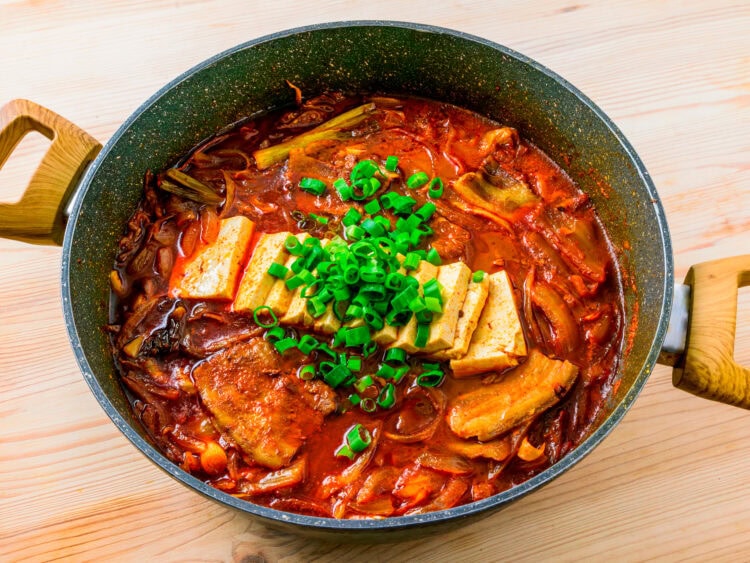A delicious Korean recipe for Kimchi Jjigae, also called kimchi stew
Do you like Korean cuisine? No, I’m not talking about westernized tteokbokki filled with cheese (not that it’s bad in itself) but traditional cuisine. One that takes a little time (and love) to prepare and develop flavors that are both subtle and intense.
That’s the promise I make to you today with this Kimchi Jjigae recipe. A homemade broth, flavorful kimchi, all tied together with savory meat.
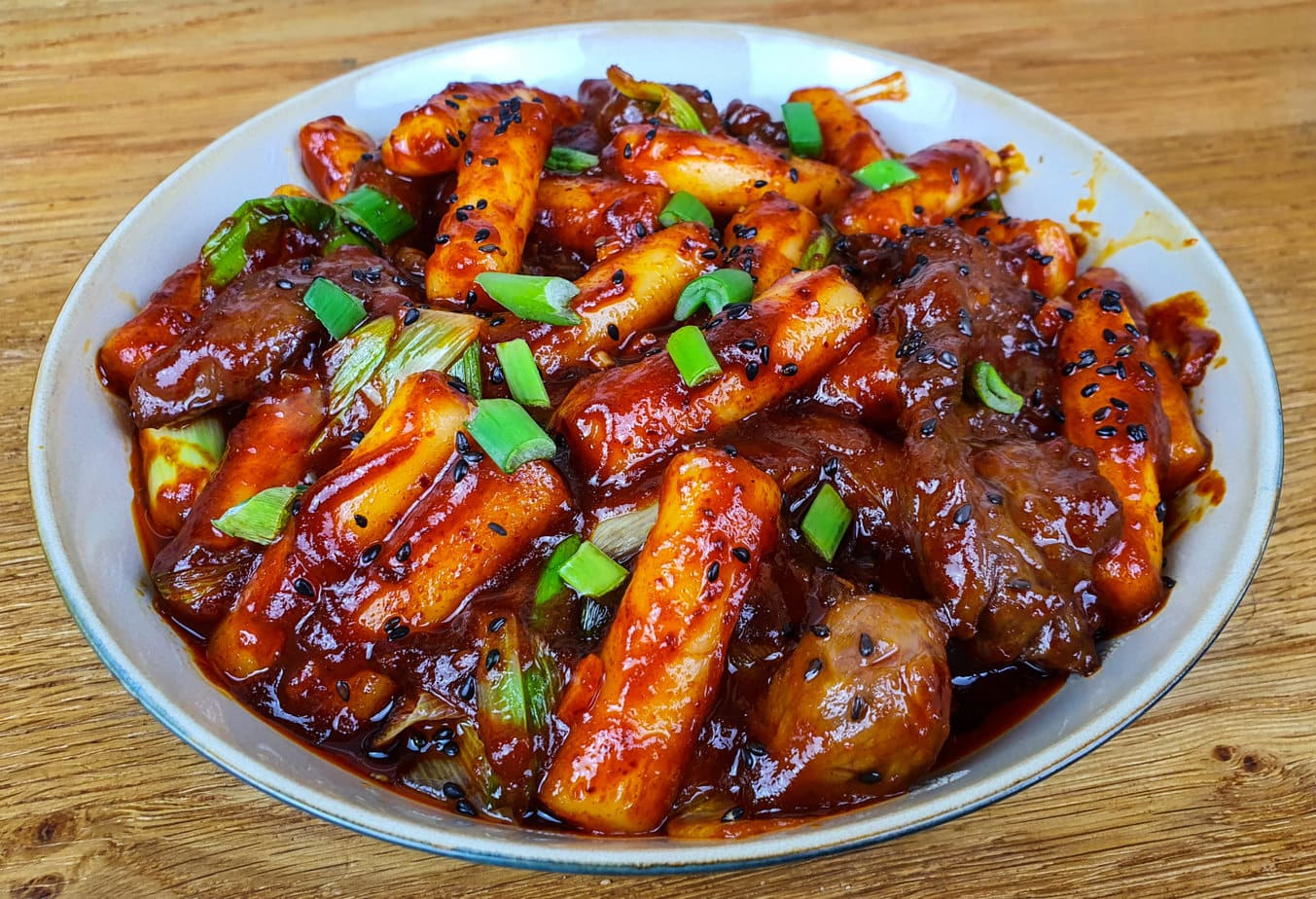
What is Kimchi Jjigae?
So, to put it simply, this dish falls into the Korean category of jjigae. That is, stews. Nothing more, nothing less. In its most basic version, kimchi jjigae is a stew using kimchi as an aromatic base. More specifically, over-fermented kimchi that is extremely acidic, bordering on inedible.
Like Samgyetang, it will be served in a still boiling ttukbaegi at the table.
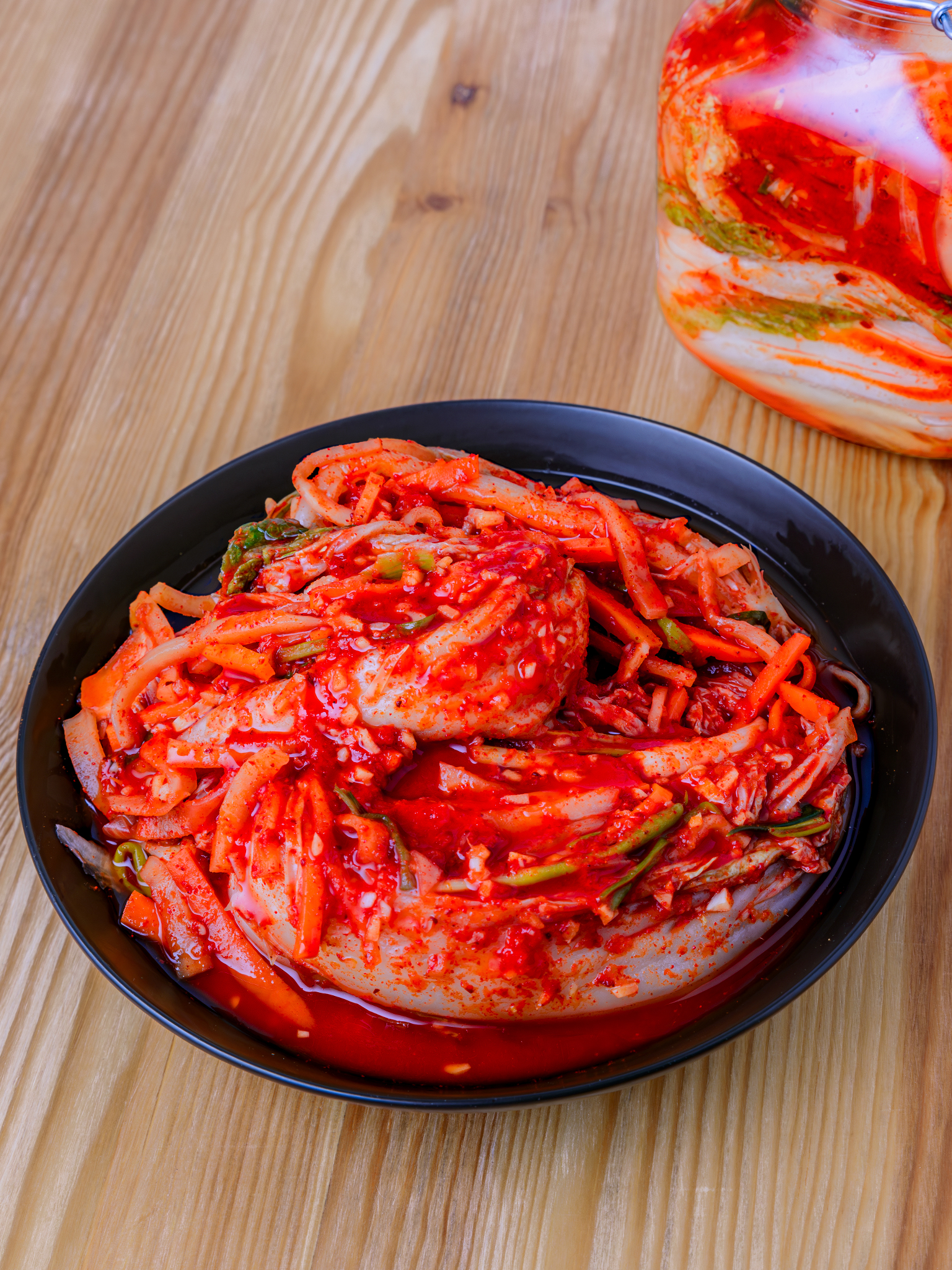
Inedible kimchi? Marc, are you trying to poison your community?
Don’t worry, you can get good results with normal kimchi. But if you want authentic flavors as you would find in Korea, it’s very difficult to reproduce the tangy perfection that comes from using old kimchi.
It’s essential to let it ferment. To speed up fermentation, you can leave the jar on the counter rather than in the fridge—but it will still take a day or two.
The difference with budae jjigae
If you’ve been following me for a while, you know me, I tend to favor a good balance between adaptation and culinary purism. But in this case, I’d like to highlight a fairly common confusion about kimchi jjigae.
In fact, it’s a dish that is meant to be quite “pure” in terms of additions. Whereas on the contrary, Budae thrives on the addition of ingredients that are not native to Korean cuisine such as spam, cheese, duck, beans, … IN SHORT, remember that for kimchi jjigae, the flavors are intense but focused.
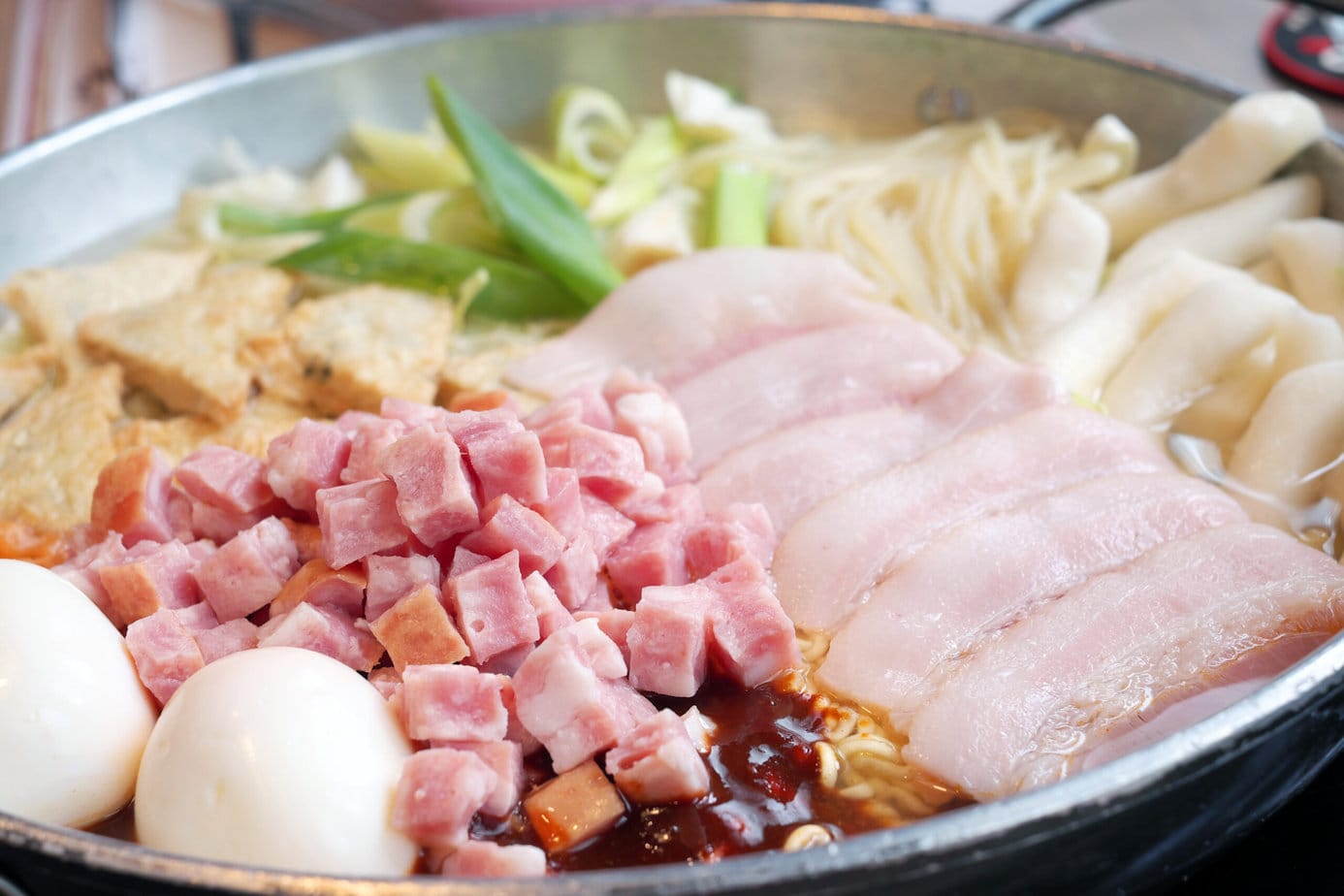
For example, no classic soy sauce except, if you like, a special Korean soup soy sauce called Guk-ganjang (국간장). Forget Chinese light or dark soy sauce, kikkoman and tamari: the flavor profiles simply don’t suit a kimchi jjigae.
The main ingredients of Kimchi Jjigae
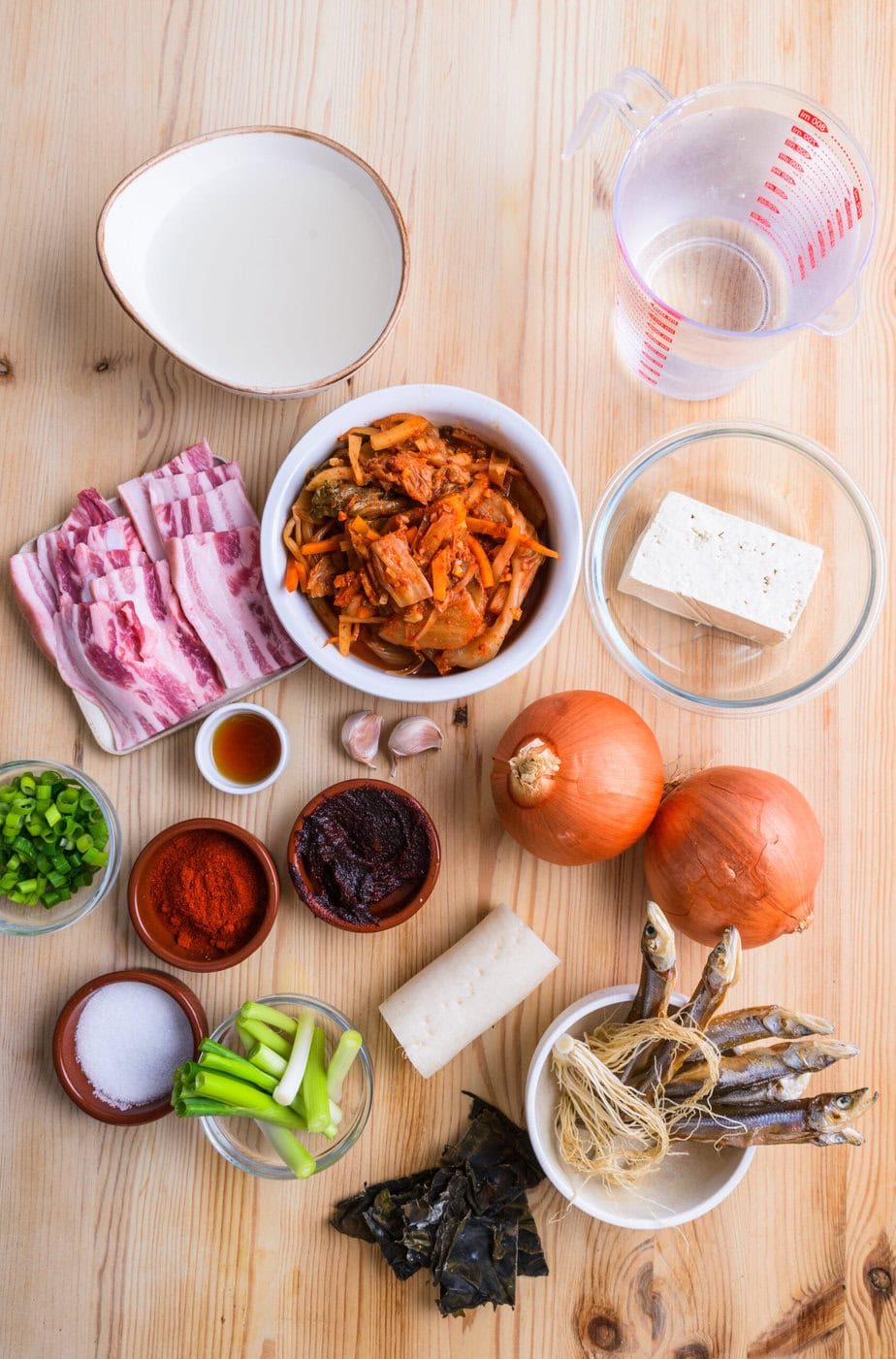
Kimchi: I mention it earlier in the article, but it’s better to use old, very acidic kimchi
Pork belly: Commonly called bacon, you need unsalted. You can use other cuts of pork but at your own risk. I choose this cut for its fat content
Gochugaru and gochujang: Korean chili powder and paste respectively, they are essential for the good taste of the dish
The broth: Here, it gets complicated. If you’ve already read the recipe, you know that you normally need a broth made from anchovies, kombu seaweed, … that’s for an authentic version. In a pinch, replace with homemade dashi, or even a broth made from powdered dashi. I won’t judge you.
However, if you choose the fish-based broth route, anchovies are a good choice as they have a very high fat content and natural glutamate (umami that is), but you can use any dried fish: sardines, trout, …
The rice: it plays a crucial role here. First as a side dish, but most importantly we will use its rinsing water to help thicken the stew. It almost feels like we’re on an Italian cooking blog hahaha
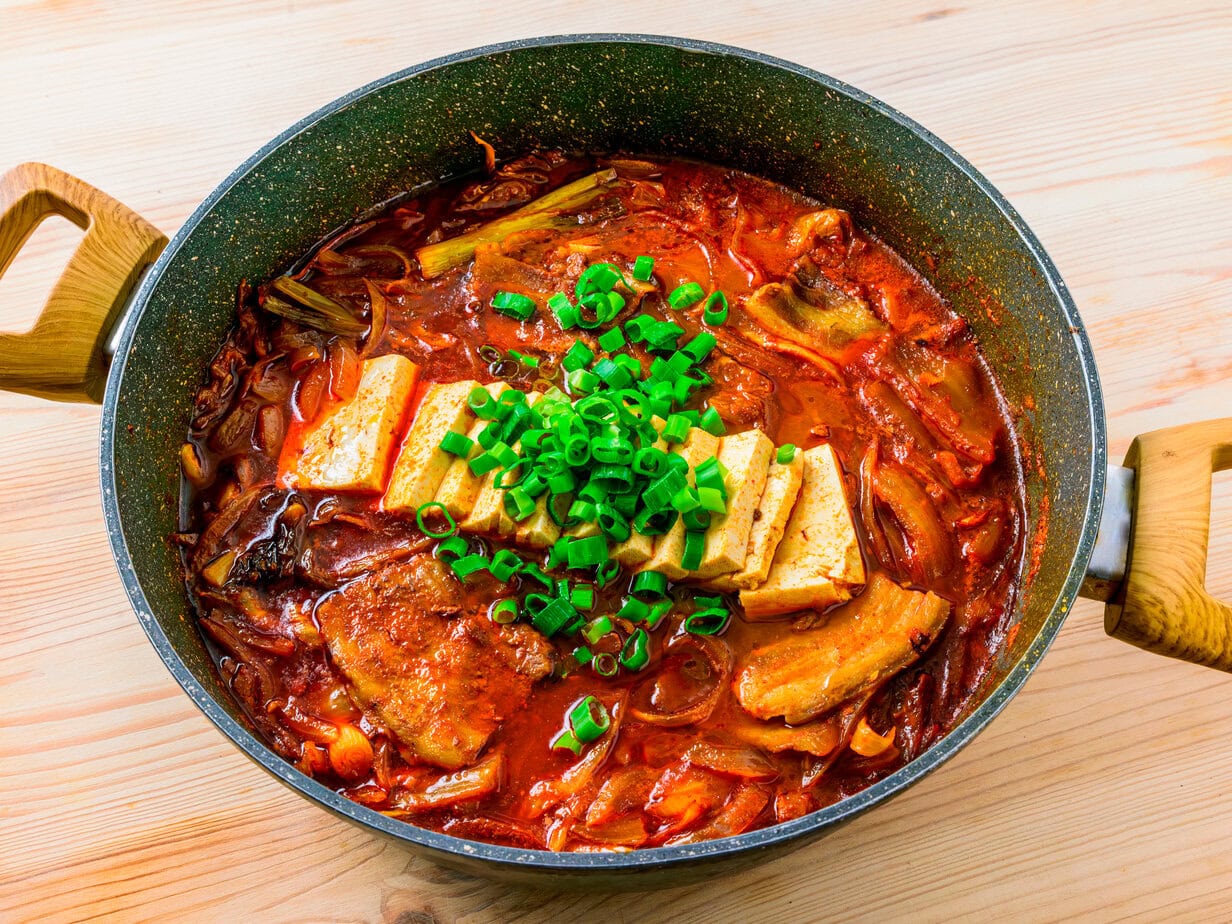
Authentic Kimchi Jjigae – Kimchi Soup
Equipment
Ingredients
- 450 g of Kimchi very fermented, very acidic, barely edible as is
- 150 g pork belly thinly sliced
- 160 g of firm Tofu thinly sliced
- Water from the 2nd and 3rd rice rinse
- 2 onions sliced
- 2 pods garlic crushed
Seasonings
- 2 teaspoons of Gochugaru
- 1 tablespoon of Gochujang
- 1 tablespoon of sugar
Bouillon
- 7 large dried anchovies heads and guts removed
- 40 g of daikon radish thinly sliced
- 4 pieces of kombu
- 4 young onion roots keep the stems cut into segments
- 1 liter water
Trim
- Sesame oil
- Sliced green onions
Support
- White rice
Instructions
Bouillon
- Put the anchovies, radish, green onion roots, and kombu in a pot.7 large dried anchovies, 40 g of daikon radish, 4 young onion roots, 1 liter water, 4 pieces of kombu
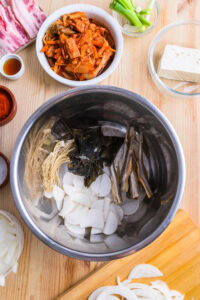
- Add water and bring to a boil over medium-high heat for 20 minutes.
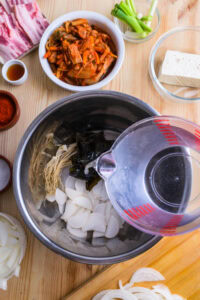
- Reduce to low heat and simmer for another 5 minutes.
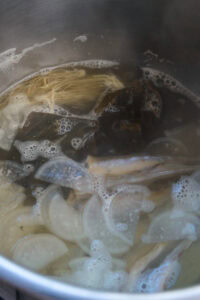
- Strain the broth.
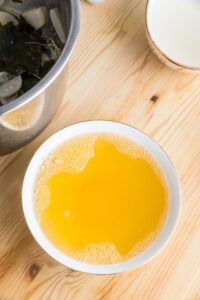
Stew
- In a pot over medium-high heat with a little oil, sear the meat. Set aside150 g pork belly
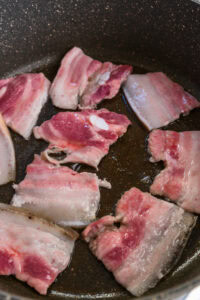
- In the same pot, over low heat, sauté the kimchi with its juice for 20 minutes. It should release juice.450 g of Kimchi
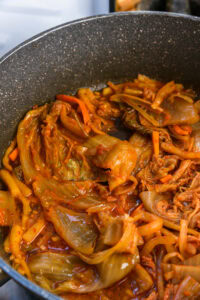
- Add the green onion stems, garlic, onions2 pods garlic, 2 onions
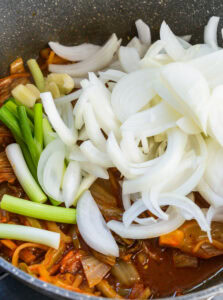
- Add seasonings.2 teaspoons of Gochugaru, 1 tablespoon of Gochujang, 1 tablespoon of sugar
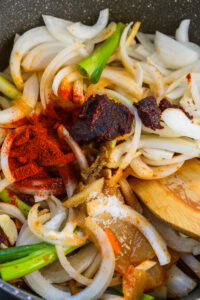
- Put the pork back in.
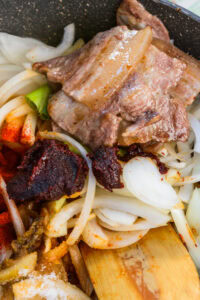
- Add enough anchovy broth to cover everything
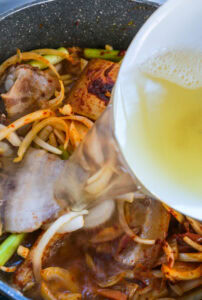
- Let it simmer uncovered over medium-high heat for 30 minutes. Meanwhile, rinse and cook your rice. Keep the water from the 2nd and 3rd rinseWhite rice
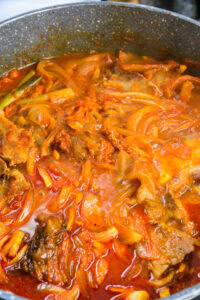
- After 30 minutes, compensate for water loss by adding the rice rinse water. You don’t necessarily have to use it all. If you don’t have enough, add more broth. And if you’re out of that too, simply use water.Water from the 2nd and 3rd rice rinse
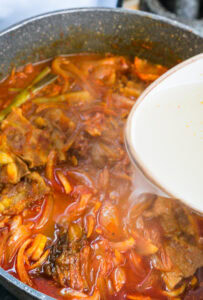
- Cover and simmer over medium-high heat for 10 minutes
- Mix well, place the sliced tofu on the surface and cover again for 10 minutes over medium-high heat160 g of firm Tofu
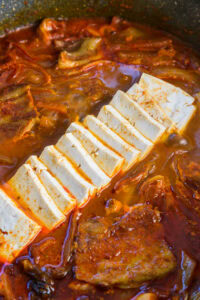
- Turn off the heat, uncover and garnish with sesame oil and green onions. Season with salt to taste before servingSesame oil, Sliced green onions
Notes
Nutrition
Culinary sources
This recipe was particularly difficult to pin down, many sources were used, each contributing their little piece to the puzzle, but I would like to mention Maangchi’s blog for her anchovy-based broth recipe that I have adapted
